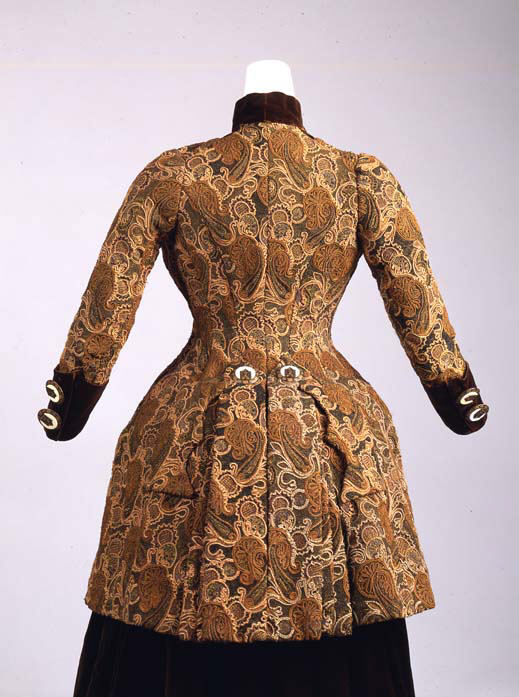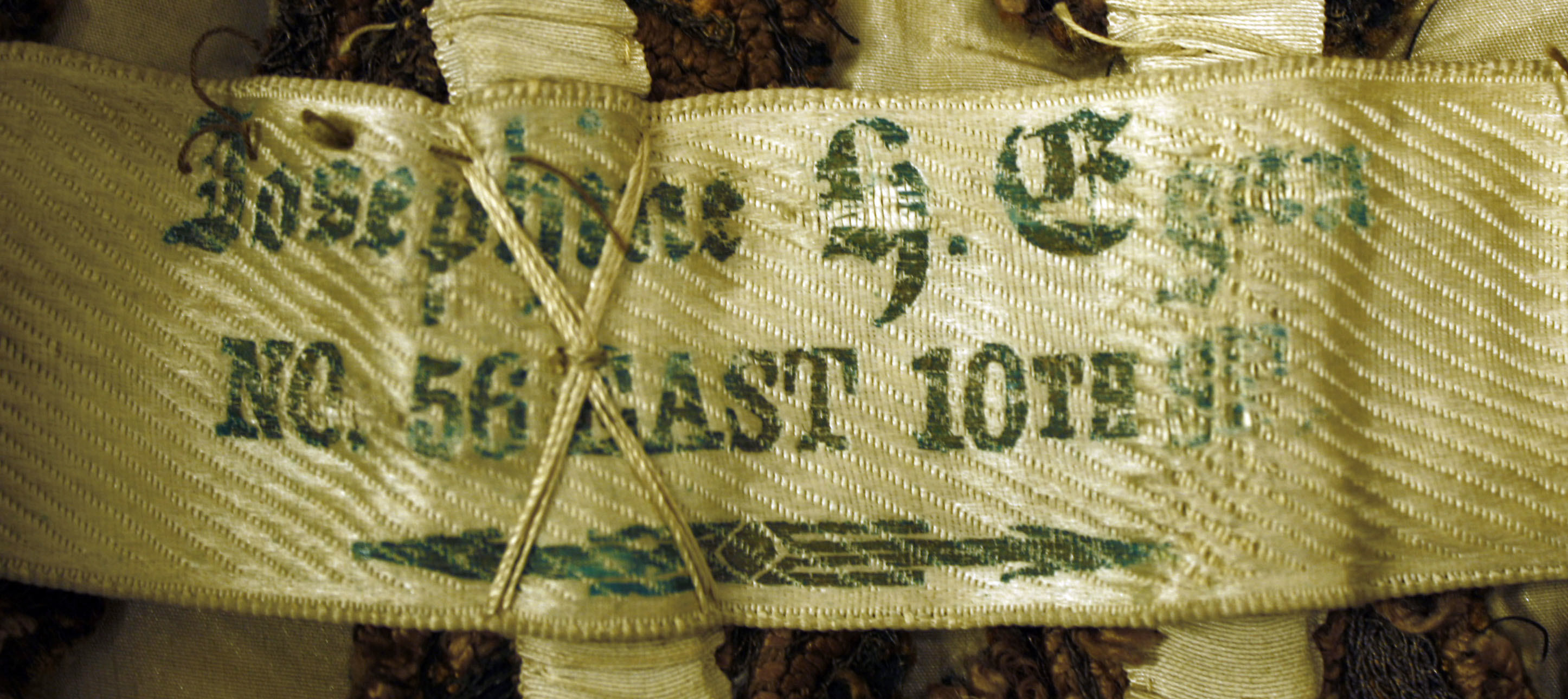Dress
Designer Josephine H. Egan
Not on view
Constructed in the manner of an eighteenth-century open robe, with the long (fifty-two-inch) embroidered jacket worn over a pleated green satin front, this American dress from "Josephine Egan, 56 E. 10th Street" also refers to dix-huitième menswear, especially in its deep cuffs and jabot-like lace at center front. Its paisley embroidery likewise connects back to the first popularity of Kashmir shawls in the West in the 1780s and 1790s. By the 1880s, as indicated here, the buta, originally squat and self-contained and restricted to borders, began to mutate into attenuated, intertwining, and whiplashed forms in an escalating horror vacui that anticipates Art Nouveau.
This image cannot be enlarged, viewed at full screen, or downloaded.
This artwork is meant to be viewed from right to left. Scroll left to view more.





